Selecting the perfect 3D art design for your game can be a complex process, requiring careful decisions about style and how to make your project truly distinctive. With a vast array of options and no clear roadmap, it’s easy to mimic existing trends, risking your game becoming just another face in the crowd. This guide cuts through the confusion, highlighting essential 3D art styles and their ideal applications, complete with examples. By mastering the intricacies of different 3D art styles, you can craft games that are visually captivating and leave a lasting impression on players.
The incorporation of 3D art styles in game development elevates visual storytelling and enhances player immersion, creating unforgettable gaming experiences. For developers, selecting the right 3D art for games serves as a critical tool in crafting unique aesthetics, emphasizing the role of visual creativity in standing out within the competitive world of game design.
Navigating through different 3D art styles for your game requires a planned approach to stand out in a cluttered market. It’s about differentiating your project with a clear understanding of the types of 3D art available. This section sheds light on primary game art styles 3D, ranging from realistic to stylized, providing clarity for developers. By mastering these choices, you can craft visually compelling and unique gaming experiences that resonate with players while carving out a distinct identity for your project.
The realism style in 3D art for games aims to replicate real-world intricacies with remarkable accuracy. Using cutting-edge texturing, lighting, and modeling, realism creates lifelike characters and environments that immerse players in breathtakingly authentic worlds. Beyond visuals, this approach extends to physics and animations, ensuring every element of the virtual space feels tangible. This style demands expertise in crafting game art styles 3D, emphasizing precision and attention to detail to make virtual settings indistinguishable from reality.
Realism thrives in genres where immersion is key. Games like Red Dead Redemption 2 showcase expansive, lifelike worlds teeming with detail, offering unparalleled player engagement. Similarly, flight simulators benefit from realistic 3D art design, delivering precise aircraft models and atmospheric effects essential for an authentic experience. Whether for open-world adventures or specialized simulators, the realism style elevates player interaction by mirroring the complexities of the real world.
These examples illustrate the adaptability of realism in 3D game art styles, emphasizing its role in creating engaging and immersive experiences across various genres.
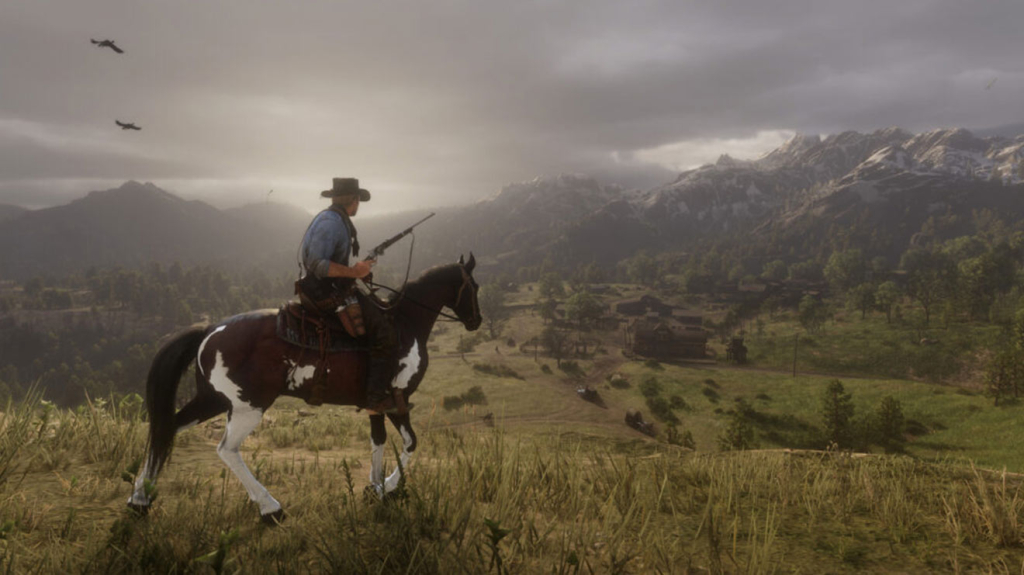
Cartoon 3D Art Style in games stands out with its vivid colors, exaggerated features, and often playful themes. This style spans a wide range, from basic shapes to intricate, detailed designs. One example is the voxel style, a form of 3D art design that adds depth to classic pixel art, offering a unique visual appeal. Cartoon-style art brings a sense of fun and whimsy to games, making it perfect for titles aiming for lighter, more engaging experiences.
On the other hand, Anime-Inspired 3D Art is heavily influenced by Japanese animation, with characters often displaying sharp, dynamic expressions and dramatic storylines. This style emphasizes distinctive 3D game art styles that push the boundaries of emotional and aesthetic storytelling. Both cartoon and anime styles prioritize creativity, offering developers a rich canvas for engaging and visually captivating games.
While both cartoon 3D art styles and anime styles are forms of animation, they exhibit distinct characteristics that set them apart. Cartoon game art often leans towards whimsical and exaggerated expressions, featuring characters with rounded shapes and vibrant colors, primarily aimed at younger audiences. In contrast, anime focuses on detailed, often more severe character designs, showcasing large eyes and intricate backgrounds that create a more immersive experience.
Additionally, anime narratives tend to explore complex themes and emotional depth, appealing to a broader audience that can include adults, while cartoons generally favor light-hearted humor and straightforward storytelling. Thus, the differences in 3D game art styles, thematic content, and target demographics highlight the unique qualities of each animation genre.
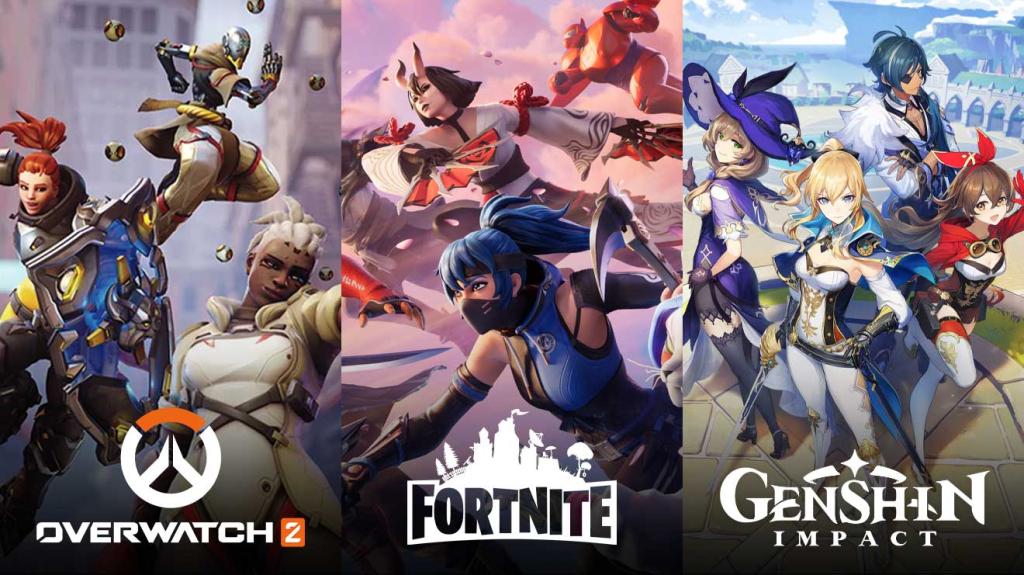
These examples highlight how both cartoon and anime 3D styles bring distinct flavors to games, enhancing storytelling and gameplay through their visual styles.
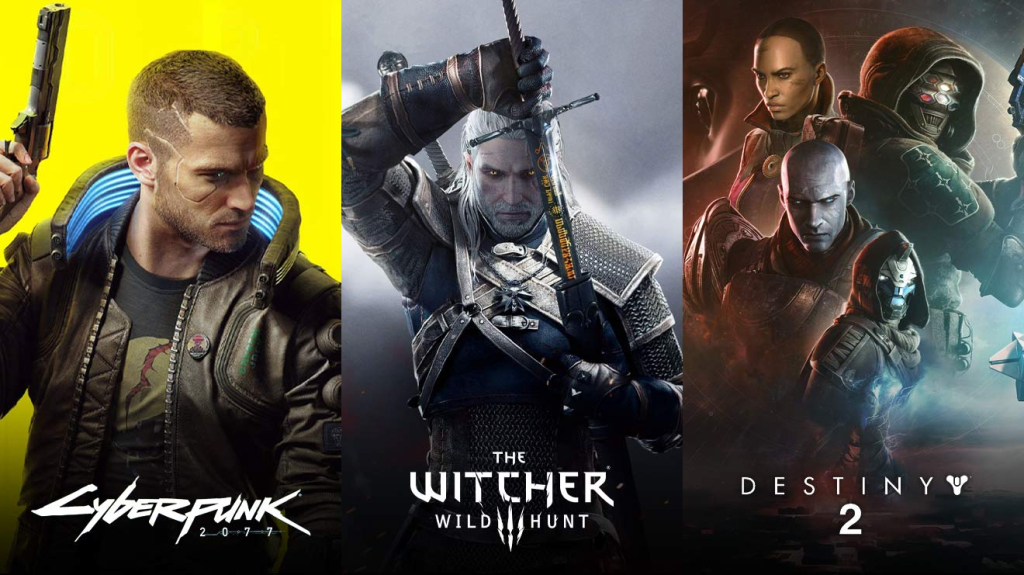
Fantasy realism in 3D game art blends imaginative elements from genres like fantasy, sci-fi, and steampunk with realistic 3D modeling techniques, creating immersive worlds that feel tangible. This art style brings together the fantastical and the believable, using 3D art styles to present extraordinary environments and characters with such detail that they seem plausible. It’s about grounding the impossible in visually compelling ways, allowing players to experience otherworldly realms that feel as rich and authentic as the real world.
Fantasy realism thrives in games that create expansive, immersive worlds. Titles like Cyberpunk 2077 and The Witcher 3 exemplify this art style, combining rich, 3D game art styles with fantastical elements to form environments that are visually striking yet grounded in a reality players can connect with. These games use 3D art for games to ensure the world-building is both imaginative and believable, fostering deeper immersion and engagement.
These games demonstrate how fantasy realism in digital 3D art captivates the imagination and enhances the gameplay experience, making exploring these worlds an unforgettable journey.
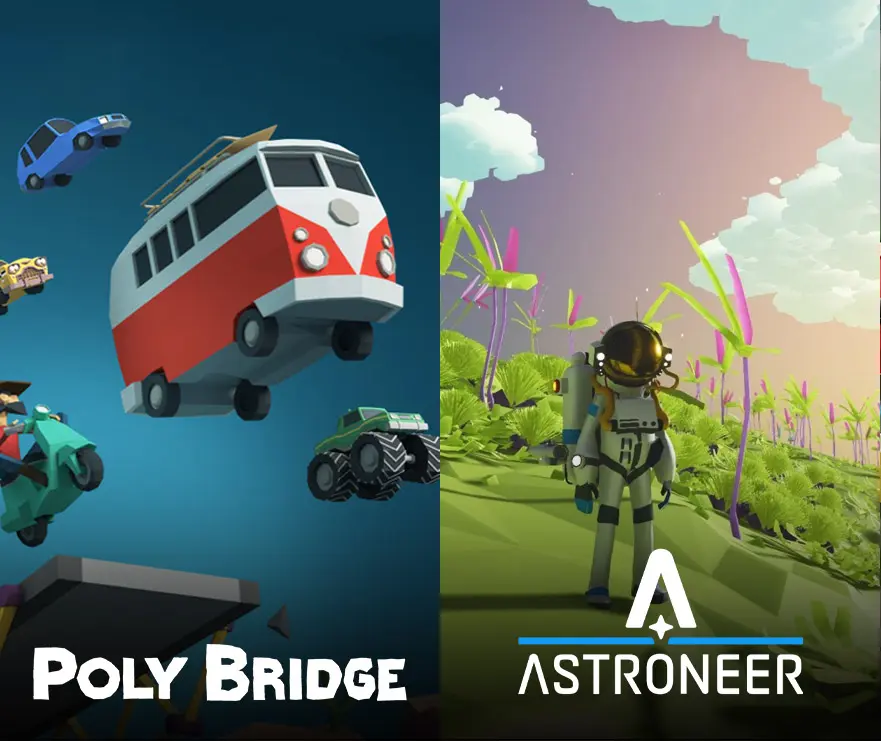
Low poly 3D art styles are characterized by a minimalist approach, where the polygon count is intentionally kept low, resulting in simple geometric shapes. This approach creates a visually distinct style that blends 3D game art styles with an efficient, streamlined design. Low poly art celebrates the beauty of simplicity, offering a unique visual experience that balances creativity and clarity, making it a popular choice for games that value both aesthetic charm and performance optimization.
Low poly 3D art styles play a significant role in modern game design, offering unique advantages across various applications:
By leveraging low poly techniques in 3D art, developers can create visually appealing and performance-optimized games, demonstrating that artistry in game design doesn’t solely rely on high polygon counts but on the effective use of geometry and color.
These games demonstrate that adopting low poly graphics enables developers to not only optimize performance but also to create visually distinct and memorable gaming experiences that stand out for their artistic innovation and gameplay design.
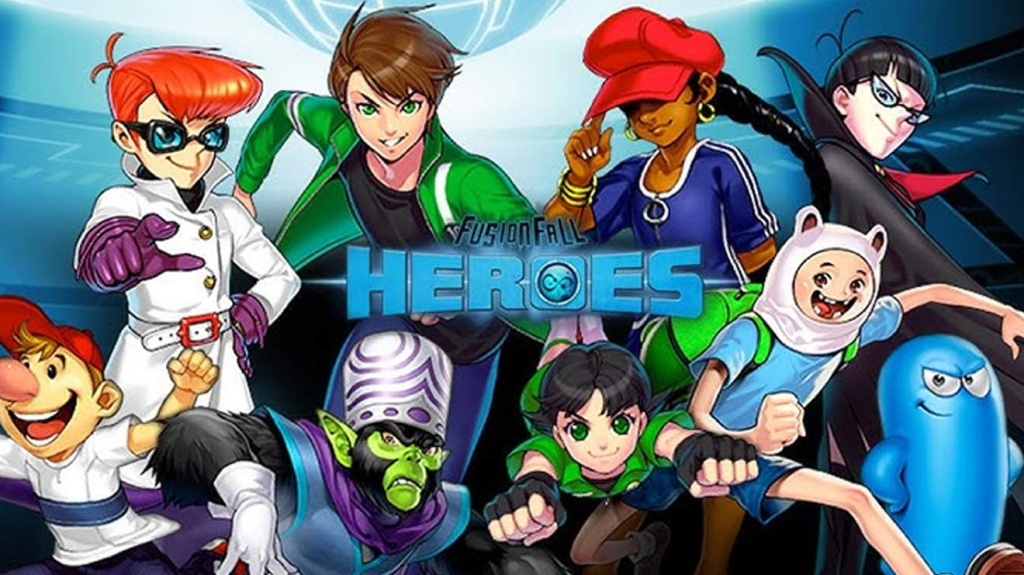
Collage art in gaming creatively merges diverse elements, textures, and materials, delivering distinctive visual experiences. Renowned for its textural variety and ability to communicate intricate themes, this 3D art design approach contrasts and blends disparate visuals to craft unique aesthetics. As one of the different 3D art styles, it offers developers a versatile toolset to create standout visuals. This 3D game art style brings a fresh perspective, enhancing storytelling and elevating the artistic appeal of games in a crowded digital landscape.
In 3D art for games, collage is particularly suited for educational and indie games, where its ability to merge different visual styles can be used to illustrate concepts or narratives engagingly.
Cartoon Network Universe: FusionFall is a notable example of the collage art style combining characters and worlds from various Cartoon Network series into a unified, visually diverse universe. This approach adds depth and intrigue, appealing to fans with its rich, layered aesthetic.
Navigating the visual landscape of game development can be challenging, with numerous 3D art styles to consider. The lack of clear guidance often leads developers to inadvertently replicate existing designs rather than establishing a distinctive look. Choosing the right 3D game art style is crucial to defining your game’s identity and engaging players in a crowded marketplace.
Navigating the visual landscape of game development can be challenging, with numerous 3D art styles to consider. The lack of clear guidance often leads developers to inadvertently replicate existing designs rather than establishing a distinctive look. Choosing the right 3D game art style is crucial to defining your game’s identity and engaging players in a crowded marketplace.
| Category | Popular Software | What It’s Used For |
| 2D Art | Photoshop, Krita, Clip Studio Paint | Creating textures, concept art, and 2D game assets. |
| 3D Modeling | Maya, Blender, 3ds Max | Sculpting characters, environments, and objects in 3D. |
| Animation | Maya, Blender, Spine | Bringing characters and objects to life with movement. |
| Texturing | Substance Painter, Mari, Quixel Mixer | Adding color and surface details to 3D models. |
| Game Engines | Unreal Engine, Unity, Godot | Where it all comes together |
| VFX | Houdini, Nuke, After Effects | Creating special effects like explosions and magic |
| UI/UX | Adobe XD, Figma, Sketch | Designing user interface and menus |
| Pixel Art | Aseprite, PyxelEdit | Crafting retro-style graphics pixel by pixel! |
At Juego Studios, we specialize in delivering 3D art for games that elevate your project’s visual appeal while staying true to its unique vision. Our tailored 3D game art outsourcing services ensure your game achieves a standout aesthetic, combining creativity, technical precision, and industry insights. Whether you’re crafting a stylized world or aiming for realistic visuals, our team works closely with you to bring your ideas to life, creating a truly unforgettable gaming experience.
The exploration of 3D art styles showcases the variety and creativity they bring to the gaming industry. Each style plays a vital role in shaping a game’s visual identity and emotional impact, making it essential to align the aesthetic with the theme and audience for memorable experiences.
For developers, collaborating with experts in 3D game art ensures their vision comes to life, achieving both artistic excellence and uniqueness in a competitive market. By understanding the nuances of 3D art design, developers can select styles that make their games visually stunning, immersive, and truly distinctive.
3D art encompasses a wide array of styles, ranging from hyper-realistic to highly stylized designs. It is defined by its ability to create depth, texture, and dimensionality in digital visuals, setting it apart from 2D art. In video games, 3D game art styles like realism, fantasy, and minimalism are employed to enhance player immersion. Developers often leverage 3D art design to tailor visual aesthetics to their game’s theme and target audience. At Juego Studios, we specialize in crafting diverse 3D art for games, ensuring that your game’s visual identity stands out in the competitive market.
When it comes to 3D character art, various styles can significantly impact a game’s visual storytelling and player engagement. Here are some of the most prominent styles:
Juego Studios excels in crafting different 3D art styles, including character art that aligns with your game’s narrative and design goals.
The four main categories of art style include realism, abstract, minimalism, and stylization. Realism focuses on lifelike detail and immersive environments, while abstract art emphasizes creativity and interpretative visuals. Minimalism is marked by simplicity and clarity, and stylization leans on exaggerated features to create a distinctive aesthetic. In gaming, these styles influence gameplay and player engagement, as each adds unique value. At Juego Studios, our expertise spans these 3D game art styles, enabling developers to choose the right artistic direction for their projects and create memorable gaming experiences.
Below are the essential to understand the three main types that form the foundation of this art form:
These techniques are essential for 3D art design, allowing developers to craft immersive environments and characters. Juego Studios employs cutting-edge tools to bring all types of 3D art to life, ensuring precision and artistic excellence in every project.
3D art materials encompass textures, shaders, and finishes that define the surface appearance of objects. These include materials like metal, wood, fabric, and glass, each enhancing the realism or stylization of a game’s visuals. Modern 3D art for games utilizes PBR (Physically Based Rendering) materials for lifelike lighting and shading effects. The choice of materials greatly influences the game’s aesthetic, from gritty industrial settings to lush fantasy landscapes. At Juego Studios, we provide tailored solutions for integrating different 3D art styles and materials, ensuring that your game achieves both visual and thematic coherence.
Video games leverage a variety of 3D art styles, such as realism, fantasy realism, cartoon, and low poly. Realism focuses on lifelike textures and physics, while fantasy realism blends imaginative elements with believable details. Cartoon styles use vibrant colors and exaggerated shapes, appealing to younger audiences, and low poly prioritizes simplicity for optimized performance. These types of 3D art not only define the game’s visual identity but also enhance gameplay and storytelling. Juego Studios helps developers choose and implement the right 3D game art styles, creating games that resonate with players across diverse genres.